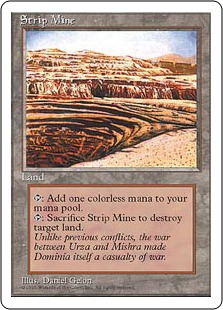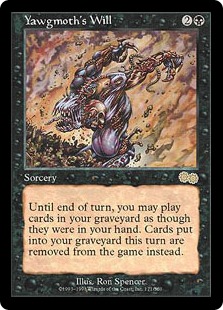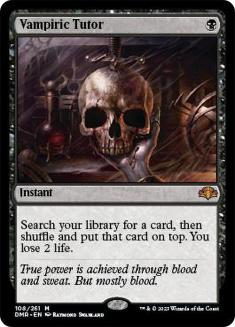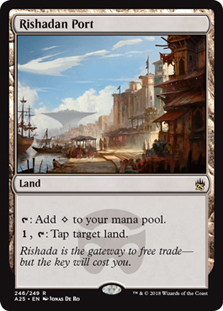Hello, and welcome to this week’s installment of Sullivan’s Satchel. I’m fresh off having covered the SCG Tour Season One Championships, and despite being assailed on all sides by the machinations of Skype and Discord things mostly went fine, and I’m definitely thirsting to cover Magic, technical issues and all. Yuuki Ichikawa took down the whole thing, which is a nice summary of one of the benefits from the “new normal” — the tournaments are functionally international. It’s particularly cool to see someone from Japan take it down, as I think that’s one country in particular that’s taken the bad end of changes to physical Organized Play in the last couple of years.
Speaking of “new normal,” 50 of the 80 decks played Growth Spiral, including the majority of the Top 8 and the winner himself. I’m guessing that the volume of actual tournaments, time until rotation, recency of other bans, etc. creates an incentive structure resembling “run out the shot clock,” but in the short-term I think the burden of proof is extraordinarily high to not play Temur Reclamation, or at the minimum some control deck sporting Growth Spiral. In the case of Reclamation specifically, the deck can win without its namesake enchantment, and so many of its best cards just sort of generically accrue more stuff, so there isn’t some obvious weakness or blind spot to attack.
Still, people tried other stuff, and I think aggressive decks that curve out well have a defensible matchup against Reclamation. I just think the delta in card quality is too high, and because Reclamation decks can win without their enchantment, it’s not as simple as sideboarding in some Naturalizes and calling it a day. On the other hand, the Reclamation decks get to load up on cheap interaction. The sideboard games felt comfortably favorable for Reclamation here, and with that being the case I’m not sure how you justify playing something else. Should be a temporary issue regardless, at least.
With that, the usual stuff. Submit your questions to [email protected], DM @basicmountain, and maybe your inquiry will make the cut and show up in the column. If you send me something especially funny or thoughtful it might be selected as the Question of the Week, and then you receive $25 in SCG credit.
From James Griffith:
Hey Pat! Super random but one of your recent comments made me think you might have gone through a pretty big loss recently. If I’m way out of line or reading into stuff I apologize, but in any case I just wanted to wish you all the best and say I hope you and your family are doing well.
No “major loss,” but in the last year my family has experienced two major medical events, started a renovation to our home, and had to fire and sue our general contractor for a variety of negligence and unethical behavior. The renovation, originally slated to be done by November of 2019, is still not done; our backyard is a dirt lot with construction material on it. I lost my job; started a variety of contracting gigs (much better/happier/more lucrative/more flexible/etc. than my previous setup, but not without its stresses); was diagnosed with depression, anxiety, PTSD, and bipoloar disorder; started seeing a therapist and began taking medication; had something of a break and had to flush my medication; and we had a baby a little over a month ago. This is all independent of COVID, having to home-school our children, all manner of unrest and uncertainty, etc.
I say all that while acknowledging that I have it way, way better than most people right now. I’m able to work from home and so is my wife, and between the two of us we pay our bills and can manage child care without too much difficulty. In some ways the shutdown makes it easier to focus on the day-to-day and the family. That said, I can feel that way and intellectualize my relatively safe and stable situation and still read the previous paragraph and acknowledge that it’s a ton for twelve months.
I think it’s important to say this stuff out loud or write it down or whatever because social media has a way of amplifying the feeling that we shouldn’t. Our friends and family are always putting on their best face, and it can make us feel some obligation to do the same, or at least stay quiet if we can’t. I’m not helping matters; my Twitter feed is a bunch of self-promotion, dunks, and pictures of Time Walks. But if you’re reading this, it’s been really, really hard for me over the last year, and not infrequently, and if it’s bad for you right now, that’s a thing we have in common.
One nice thing is that I receive comments or questions like this every so often, and I’m not sure it would happen if COVID wasn’t part of the equation. I know I’m more mindful to reach out to people; I’ve got the time, things are moving more slowly, and it’s easier to be mindful of reciprocity when you feel how much those gestures mean to you. So thank you, I’m doing okay, more or less, and I hope you are too.
From Dorkish Lumberjack:
Sullivan’s Satchel Question: Hi Patrick, I just started playing this community format Pre-Modern. As a player who started in 2008, it’s great to watch cards restricted in Vintage be… just fine in older contexts. What’s your best story about playing four copies of a card currently restricted in Vintage?
When I started playing, you were allowed to play four copies of Strip Mine. No one questioned this. Once it got printed in Fourth Edition, it became a ubiquitous part of our local scene (I’m not sure if they were expensive prior to that, but we literally couldn’t get cards from Antiquities and buying off the internet wasn’t really a thing yet). Same thing with Mishra’s Factory. Even though we could identify these cards as powerful staples, we were still beholden to the old rule book, which advised a 20/20/20 land/creature/spell split no matter what your deck was up to. That lead to manabases like this (my R/G – now Gruul – beatdown deck):
About two seconds of critical analysis would reveal that this isn’t a recipe to cast Roc of Kher Ridges reliably, or even make your Kird Ape a 2/3, but this orthodoxy was beyond question. One day, Eugene Harvey, my old schoolmate and one of the baddest to ever do it, a natural genius with Magic, suggested, “Hey, do you think that maybe we should add another land or two to these decks? Or at least cut a copy of Mishra’s Factory for a land that produces red or green mana?” I remember making fun of him for that.
I got re-engaged with Magic around 1999, so I got to play a lot of Standard with four copies of both Yawgmoth’s Will and Vampiric Tutor as a major part of the experience. Again, no one thought this was weird at the time.
From Mike Jarvis:
The reasoning behind banning Arcum’s Astrolabe in Modern seems very similar to the reason behind Deathrite Shaman’s banning in Legacy. Both enabled four and five-color manabases with little drawback. Considering Legacy has additional cards like Rishadan Port and Wasteland to keep those manabases in check, do you think Modern would benefit from having a similar card? Is Port too good to be modern legal?
I was around for Rishadan Port being Standard-legal and I think it is perhaps the most egregious Standard-legal card of all time that didn’t get banned. Part of this was the surrounding architecture — multicolor lands were atrocious; there were a bunch of pushed Stone Rains and Counterspells; it was also, wildly enough, in the same set as Dust Bowl. But just on pure rate I think it’s too much, especially given how unfun the incentives and gameplay actually are.
Would Port be the most powerful card in Modern in absolute terms? Probably not, at least it’s not clear to me that it’s an objectively stronger Magic card than Lightning Bolt or Thoughtseize. But the nature of non-rotating formats is that the games get faster, more extreme, more hostile towards expensive cards, and Port is so hostile towards expensive cards and so powerful alongside cheap cards that I think it would only accelerate things to their natural conclusion. Bloodbraid Elf and Jace, the Mind Sculptor are fringe players in spite of their pedigree, which demonstrates how hard it is to get those sorts of cards over in Modern. I think Port would be another nail in the coffin.
And this week’s winner of Question of the Week, from Alex Bastecki:
More generalized questions for B+R:
Do you think that how online TCGs handle powerful cards has caused a fundamental change in how Wizards deals with B+R updates? How should/shouldn’t WotC change their philosophy to keep up with competitors?
I’m not sure how much is informed by competition; WotC hasn’t explored “live balance” updates (functional errata, changing costs, etc.) even though these changes are trivial (at least logistically) on purely digital clients. Maybe there would be ideological opposition to this regardless; some digital-only games still just ban cards outright, though this is less common. But I think it has, consciously or not, moved the needle on the tolerance for bans in general. Physical cards are relatively expensive compared to their digital counterparts, are more laborious to acquire, and facilitate fewer overall games, at a lower speed, than what happens on digital.
The ecosystem of physical (it takes a while to get cards and then you play a FNM a week or whatever) makes a case for a relatively high bar to ban cards; boredom is less likely to be a concern here even if one deck is the best for an extended period of time, people just aren’t playing enough games to get there, and on the other side the cost of banning cards is high. Digital is very much the opposite — people play a ton of games, the format reaches the finish line a lot faster, and the cards are typically cheap and WotC can offer rebates in some form or fashion on the stuff they decide to ban.
To me, that’s one of the interesting things to consider about Magic in the face of COVID — it does have the consequence of moving a higher percentage of the total games of Magic played onto digital clients, away from paper, and that should change the calculus on the bar for banning. I think Magic is less adverse to bannings than, say, ten or fifteen years ago, even controlling for the move to digital, but if physical tournaments are a ways away, less frequent, or just less a part of the overall system going forward, that changes what I believe the tolerance towards bans should be.
The companion change is an interesting potential proof of concept — the cards don’t do what they say anymore, no one could possibly intuit what they do, you have to avail yourself of some external resource, and it’s trivial to change on digital. I don’t think that sort of change would have been executed ten years ago. If it’s perceived as having gone well, or at least well given the parameters, it could introduce a new philosophy or at least tolerance for creative “solutions” that fly in the face of traditional physical heuristics. Just something worth paying attention to, I think.






